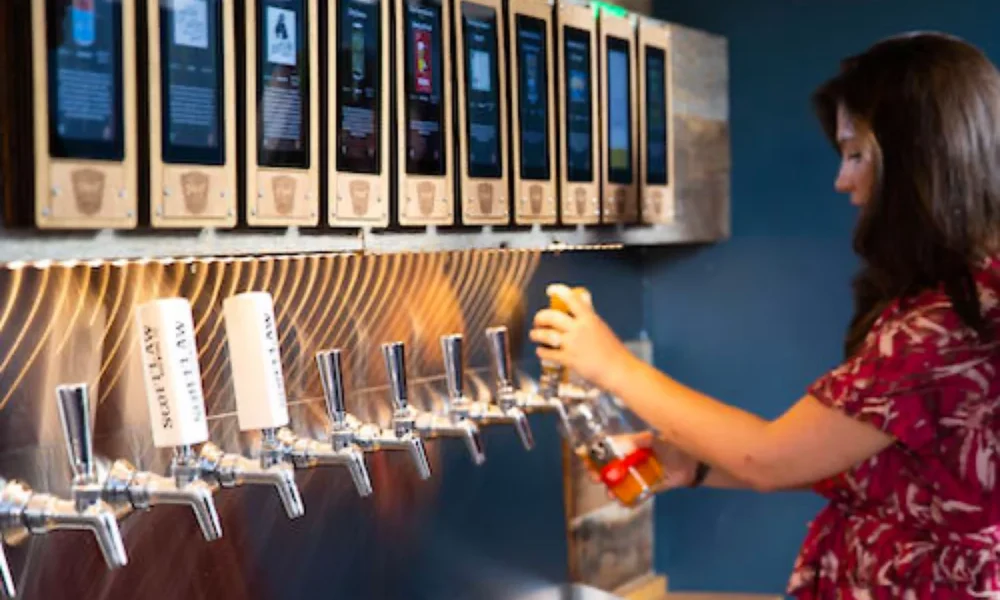Upgrading From Traditional Taps to Reliable Self-Pour Systems That Scale Revenue

A bar’s success often comes down to the speed and precision of every pour. On crowded nights, staff juggle queues, orders, and turnover, while each overfilled pint cuts into slim margins. Guests lose patience in line, wasted ounces erode profit, and repeated training pulls supervisors from other priorities. In a business where efficiency and consistency define outcomes, pouring is not just routine — it is strategy.
Self-pour systems capture revenue to the ounce, remove bottlenecks, and let guests explore at their own pace. Hardwired reliability, POS integration, and secure logging add stability, while precise data guides pricing and stock decisions. What was once a hidden drain becomes a steady engine of growth—operators gain consistency, guests gain freedom, and every pour builds long-term performance.
Operational Drawbacks of Traditional Taps
Friday nights often reveal the cracks in traditional pouring: long lines, overworked staff, and impatient guests. Manual pours keep servers tethered to taps, slowing service and creating choke points at peak times. Overpours and uneven portions quietly erode margins, while unnoticed pours accumulate into real losses. Staff turnover compounds the issue, as each new hire demands hours of retraining.
These operational weaknesses cut into profit and increase risk, squeezing margins tighter. Introducing self serve beer stations addresses the problem directly, allowing guests to pour accurately while tying every ounce to a tab. Revenue is captured consistently, overpour loss shrinks, and staff are freed to engage where they create more value. Testing a single tap wall during peak hours highlights immediate gains.
What Makes Self-Pour Systems Dependably Reliable
A dependable pour line turns nightly uncertainty into steady revenue. Hardwired connections cut the chance of Wi-Fi dropouts and keep taps online during service peaks. Redundancy sits in controllers, local pour-logging and UPS-backed power so a single fault doesn’t halt service. On-site caching preserves recent transactions when networks go quiet.
Manufacturers that ship redundant valves, modular spares and remote-diagnostic tools shorten repair windows and limit lost pours. Multi-year warranties paired with a quick-response support plan shift repair costs out of operating months. Testing one popular line by hardwiring it, adding a redundant flow sensor, and tracking uptime across two busy weekends reveals practical reliability gains.
Revenue Growth Driven by Ounce-Based Service
Metered-ounce pricing rewrites how each drink contributes to profit. Charging by the ounce captures incremental revenue that flat pours leave behind, and guests pour exact portions to match appetite and taste. Precise pours cut spill-related loss and shrinkage, improving per-unit margins while making premium taps more approachable for casual buyers.
Variety pays when per-ounce billing removes waste-based risk; rare and seasonal taps can run without oversized pours draining stock. Flavor-forward lines, ciders, sours and cocktails on tap become profitable experiments because pours align to demand. A practical path is pricing one high-margin keg by the ounce, then using pour patterns to fine-tune price points and limits.
Seamless Integration Into Existing Venue Operations
Self-pour systems fit naturally into existing operations, enhancing service without disrupting established workflows. QR-linked tabs and entry scanners support smooth guest entry, while clearly labeled taps help patrons find and select their preferred beverages with ease. POS integration links each pour to a tab, streamlining checkouts and improving real-time inventory tracking.
Routine tasks like portioning and pour logging are handled automatically, allowing staff to focus more on hospitality and guest interaction. Managers gain back time for coaching, floor oversight, and operational planning. A limited rollout on a single tap wall offers measurable insights and a straightforward path to broader adoption—no major infrastructure changes required.
Guest Experience as a Competitive Advantage
A self serve beer wall introduces a social dynamic that reshapes the atmosphere of a venue. Guests can pour small samplers, compare flavors, and share recommendations, creating a natural point of interaction. Clear tap labeling, visible pricing by the ounce, and flexible pour sizes reduce hesitation for casual drinkers while making discovery more rewarding for enthusiasts, encouraging longer visits.
Presentation plays a central role in turning this service into an advantage. Well-placed signage, digital tasting notes, and menu prompts guide guest choices while reinforcing value. Loyalty rewards tied to pours and subtle pairing suggestions encourage repeat engagement. The result is a guest-driven experience that blends exploration with convenience, strengthening satisfaction while steadily increasing overall spend.
Switching from traditional taps to self-pour systems delivers efficiency, reliability, and consistent revenue growth. Staff spend less time pouring and more time connecting with guests, while patrons enjoy faster service, wider variety, and freedom to sample at their own pace. Ounce-based pricing turns every pour into measurable profit, reducing waste and capturing margins that flat-rate service misses. Hardwired reliability and redundant safeguards keep operations steady, even during peak hours. Tested in pilots and scaled methodically, self-pour is more than an upgrade — it is a sustainable model that balances hospitality, guest satisfaction, and financial performance for long-term success.

Source: Upgrading From Traditional Taps to Reliable Self-Pour Systems That Scale Revenue


